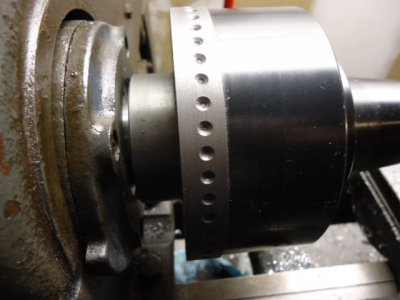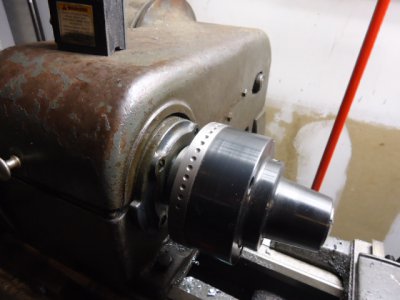Charley
My lathe doesnt have much under the bottom lip either, maybe 3/4 inch. So if you can make it work on the flat, it saves time cutting Vee in the base.
You will need a usefull prime # to get common divisions you want.
I chose 60 holes @ 6 degree,s spacing. That gave me the most usefull line up of divisions. But there are othe usefull prime #s that will work allso.
60 will give you ability of getting 2,3,4,5,6,10,12,15,20,30,60 divisions
Others can be good for less divisions, and more basic. Some guys will only need to put bolt patterns of small evenly spaced #s. Here is for instance
24 will give you 2,3,4,6,8 divisions very common for bolt patterns used. Spacing on the 24 is every 15 degree,s
Other usefull prime #s
72 is allso a good one. That will give you 5 degree,s between holes,
Just take your prime #, and divide into 360, then that # by the amount of divisions you want to do. You will soon figure out what a given hole count will, and will not do for you.
Hope I didnt confuse the issue for you
Sorry for that and hope you still have a sense of humour


 but had intended to.
but had intended to.



